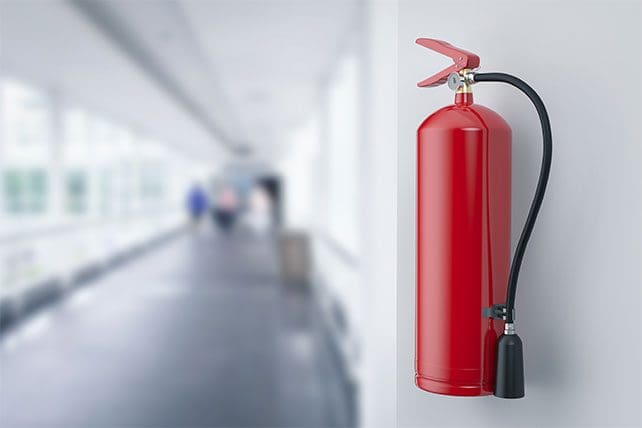AEDs should be placed in a central, visible location, and multiple staff members or volunteers should be trained in their use. Many local fire departments and health organizations offer free or low-cost AED training sessions.
Fire Safety Equipment
Churches, especially older buildings, are vulnerable to fire risks due to outdated wiring or the use of candles and incense. To address these risks:
-
Install and maintain smoke detectors in all key areas.
-
Have fire extinguishers placed strategically, particularly in kitchens, near electrical panels, and in hallways.
-
Post clear fire evacuation maps throughout the building.
-
Ensure exit signs are visible and emergency lighting is functional.
Regular fire drills, especially in churches with large children’s ministries, can help ensure a calm and organized response in the event of an actual fire.
RELATED: Parent’s Safety Expecations
Personal Protective Equipment (PPE)
While PPE became more commonly used during the COVID-19 pandemic, it remains important for a wide range of health and safety scenarios. Churches should stock the following PPE:
-
Disposable face masks
-
Hand sanitizers with at least 60% alcohol content
-
Face shields or eye protection for first responders
-
Disposable gowns or aprons (especially for nursery and medical team use)
Keeping PPE in easily accessible locations helps protect both staff and visitors during infectious outbreaks or while performing first aid.
Special Considerations for Children and Youth Ministries
Ministries serving children and teens require additional safety measures. In addition to child-specific first aid supplies like smaller bandages and liquid pain relievers, these areas should include:
-
Baby-safe cleaning products
-
Childproof locks and outlet covers
-
Emergency contact forms for each child
-
Allergy alert signage
Volunteers and staff working with minors should also undergo background checks and receive basic training in child safety and emergency response.
Training and Maintenance
Having the right equipment is only one part of church safety. Regular training ensures that volunteers and staff know how to use safety gear effectively. At a minimum, churches should provide:
-
CPR and first aid certification for key team members
-
Annual reviews of emergency procedures
-
Periodic safety audits of the facility
It’s also important to inspect and restock first aid kits and safety gear regularly. Expired medications, depleted supplies, or malfunctioning equipment can undermine an otherwise sound safety plan.
Church safety requires a deliberate and consistent approach. By equipping the church with essential first aid supplies, life-saving devices, fire protection equipment, and appropriate PPE, church leaders demonstrate care for their congregations. As communities of faith, churches are called to be places of refuge—not just spiritually, but physically. Investing in safety measures is a powerful way to honor that mission.
What existing safety measures does your church already have in place?

